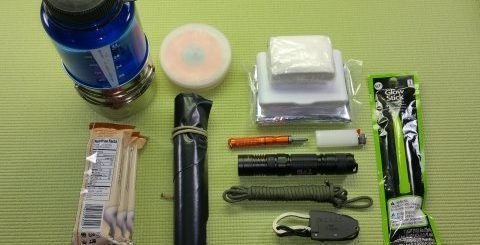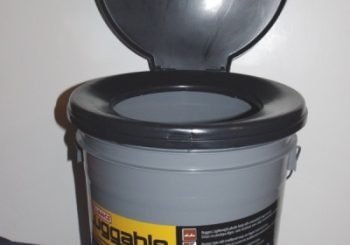Water Storage for Emergencies
Emergency water storage is often the first step on the road towards better preparedness. The FEMA recommendations, which should be thought of as a bare minimum, are at least one gallon per person per day, with a two week supply on hand. Since most Americans use between 100 and 200 gallons a day in non-emergencies, it is easy to need even more water storage.
A good first step is to develop a water storage plan. This is just a matter of setting a storage goal by figuring how many people will be using the stored water and for how long, then deciding the best way to keep it around. The FEMA water recommendations are a good starting point but do not figure in for activities like flushing toilets and taking showers, so they can fail to meet expectations. A better plan is to come up with a personalized estimate by figuring out how much water will actually be needed by your household per day to cover drinking, personal hygiene, washing dishes, flushing toilets, etc. Do keep in mind that it can be easier and ultimately cheaper to reduce water consumption by changing behaviors, such as using a portable toilet instead of flush toilets during emergencies. Also, keeping some paper plates and plasticware tucked away in an emergency bucket helps reduce dishwashing.
Once we figure out how much water should be available, the next step is to decide how to store it. Fortunately, this is not something that has to be done all at once. We can work towards our goal one step, or one paycheck, at a time and move from three to seven to ten or fourteen days worth of reserves. The easiest way to get started with water storage is to just pick up a few cases of bottled water from the store. If you are starting from zero, then this would be a good first step to take this week.
Since it takes a little over seven and a half bottles of Dasani to make a gallon, this is not an efficient way to store more than a few days worth of water. While it is certainly possible to get some H2O out of your toilet tank (don’t drink it) or hot water heater in an emergency, having to scoop anything out of your toilet is a pretty good sign that some plan has fallen short. Fortunately, there are plenty of water storage options on the market, each with its own trade-offs.
WaterBob is a cheap way to turn a bathtub into one hundred gallons of stored water in an emergency. It consists of a plastic liner that is filled from the tub’s faucet and a hand pump for siphoning out the stored water. The big trade-off is that each WaterBob set is designed to be used right before an emergency occurs, so it could be a good choice in an area that needs to prepare for hurricanes with a few days notice, but not so much if surprise earthquakes are a concern.
If you already use water cooler style five-gallon bottles, then picking up a few Bottle Buddy storage racks is an easy way to increase your bottle capacity while using less floor space. While these are certainly convenient, they are awkward to use by themselves without a cooler , stand or a hand pump.
The Aqua-Tainer has been around for years and is the classic, square water storage jug. They are also relatively inexpensive and reasonably durable. The main cap has a built-in spigot that can be screwed in place to act as a faucet. Setting one of these up on a ledge, table or the edge of a sink with a roll of paper towels bungee corded to the top turns it into a hand washing station. Replacement parts are also available. The trade-off is that they are only stackable-ish. Stacking works great when they are empty, but when filled with fifty-six pounds of water, not so much.
If space is at a premium and stacking containers are a must, then WaterBrick is worth checking out. The “bricks” are durable enough to handle stacking up to four feet high. The company makes a variety of stacking containers for storing not just water, but also food, ammo, etc. Their products are basically the survival version of Legos.
If storing a lot of water is part of the plan, then plastic barrels are the traditional way to go about it. Fifteen and fifty-five gallons are both common sizes, which allow for a quick way to build up some bulk storage. The trade-off is that these barrels quickly get really heavy when full, so they are a better fit for bugging-in than bugging-out. Also, they require a bung wrench and hand pump for easily opening and dispensing water. If barrels are not big enough, then water storage bladders are basically a soft-sided barrel, the same way that an MRE pouch is a soft can of food. They can take your water storage capacity of up to three hundred gallons each.
When storing water in any container, make sure to wash it out thoroughly first, especially if re-using bottles. While a sealed container of water will not really expire, it does make for a great place to grow all sorts of interesting slim and funk type science experiments due to contamination. Adding a couple of drops of plain Clorox per gallon or stepping up to a purpose made product like Aquamira can go a long way towards keeping the nasties out and making the need for water rotation much less frequent. But, no matter how you do it, today is the day to improve your water storage as the next step towards better preparedness.













